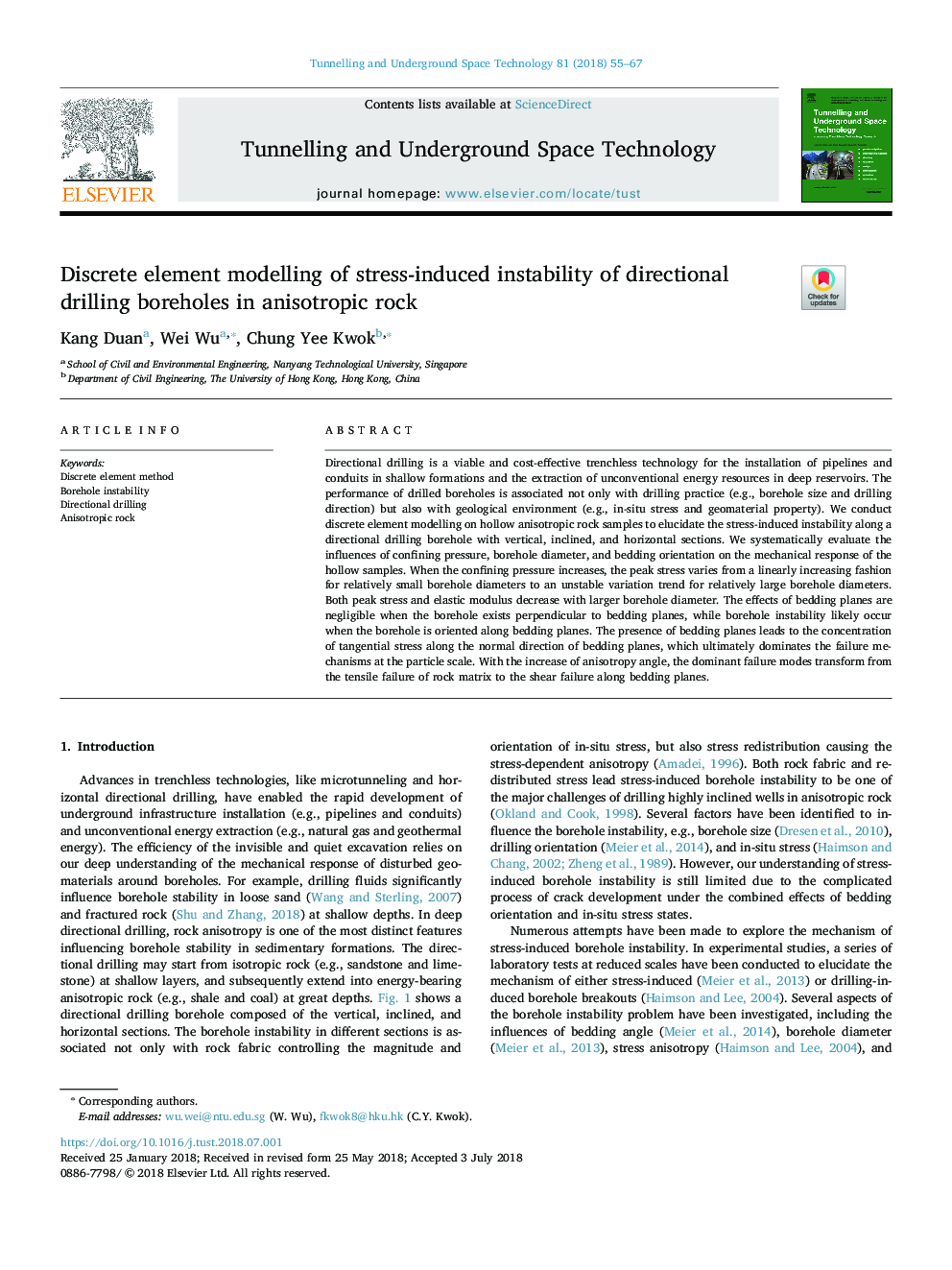| Article ID | Journal | Published Year | Pages | File Type |
|---|---|---|---|---|
| 6782081 | Tunnelling and Underground Space Technology | 2018 | 13 Pages |
Abstract
Directional drilling is a viable and cost-effective trenchless technology for the installation of pipelines and conduits in shallow formations and the extraction of unconventional energy resources in deep reservoirs. The performance of drilled boreholes is associated not only with drilling practice (e.g., borehole size and drilling direction) but also with geological environment (e.g., in-situ stress and geomaterial property). We conduct discrete element modelling on hollow anisotropic rock samples to elucidate the stress-induced instability along a directional drilling borehole with vertical, inclined, and horizontal sections. We systematically evaluate the influences of confining pressure, borehole diameter, and bedding orientation on the mechanical response of the hollow samples. When the confining pressure increases, the peak stress varies from a linearly increasing fashion for relatively small borehole diameters to an unstable variation trend for relatively large borehole diameters. Both peak stress and elastic modulus decrease with larger borehole diameter. The effects of bedding planes are negligible when the borehole exists perpendicular to bedding planes, while borehole instability likely occur when the borehole is oriented along bedding planes. The presence of bedding planes leads to the concentration of tangential stress along the normal direction of bedding planes, which ultimately dominates the failure mechanisms at the particle scale. With the increase of anisotropy angle, the dominant failure modes transform from the tensile failure of rock matrix to the shear failure along bedding planes.
Related Topics
Physical Sciences and Engineering
Earth and Planetary Sciences
Geotechnical Engineering and Engineering Geology
Authors
Kang Duan, Wei Wu, Chung Yee Kwok,
